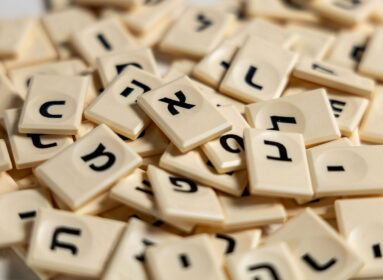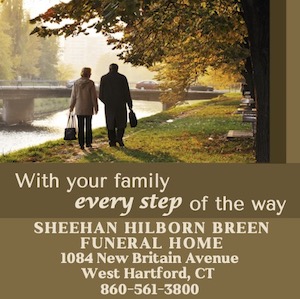
Hug a chicken and 4 other twists on traditional High Holidays Rituals
By Ben Sales
NEW YORK (JTA) – Picture services for the High Holidays: A roomful of congregants sitting with heavy books in their laps listening to a rabbi sermonize or a cantor chant is what likely comes to mind.
Baking pizza? Embracing a chicken under a tree? Not so much.
But those are some of the things that Jewish clergy, educators and activists want Jews to do during their holiest days of the year.
Aside from attending synagogue or dipping apples in honey, the extensive body of High Holidays traditions includes rituals that are participatory, intricate and even acrobatic – but also obscure, inaccessible and sometimes distasteful.
In recent years, Jewish educators have tried to reclaim these rituals – changing and innovating them to be more engaging, understandable and relevant.
Here are five ways Jews are getting creative with the High Holidays this year.

CAP: Sarah Chandler leads a twist on the kapparot ritual in which participants hug chickens rather than swinging them over their heads. (Courtesy of Chandler)
To merit forgiveness, hug a chicken
If you walk into a haredi Orthodox neighborhood the day before Yom Kippur, don’t be surprised to see men swinging live chickens above their heads. The ritual, called kapparot, aims to symbolically transfer a person’s sins onto the chicken, who then is donated to the poor and slaughtered for food.
Some observant Jews, unable or unwilling to gain possession of a live chicken, now swing money over their heads that then goes to charity. Others have taken to protesting communities that still use chickens.
But at the Isabella Freedman Jewish Retreat Center, Sarah Chandler has a different response: Instead of grabbing the chicken and whipping it through the air, just give it a hug.
Chandler, who was ordained as a Hebrew priestess at the Kohenet Institute and also goes by Kohenet Shamira, will take a group to the center’s chicken coop on the Sunday before Yom Kippur and begin to recite the kapparot prayers. Then, if the chickens agree, the assembled will take them, retreat to a shaded area and individually embrace them while completing the prayers, confessing their sins or meditating.
At the end of the ritual, the worshippers will simply let the chickens walk free.
The crowdsourced confession
Every year on Yom Kippur, no matter where he’s lived, David Zvi Kalman has joined other congregants at synagogue in standing through a long list of communal sins recited by the entire congregation. The confessional prayers, known as the Viddui (Hebrew for confession) each begin “For the sin we have sinned before you …” The laundry list of transgressions, covering everything from eating impure foods to berating a friend, is a central piece of the day’s liturgy and is repeated eight times. Worshippers are supposed to gently beat their chests at each line.
Kalman had trouble identifying with the prayers. They’re the sins the liturgy says you should feel sorry for, not necessarily the ones you actually committed.
So in 2013, he created AtoneNet, a bare-bones Tumblr where people can anonymously post the sins they would like to confess and receive forgiveness for – “sins” such as not giving enough charity or getting angry. One post reads, “For taking housemates’ food that isn’t mine without asking.”
Kalman prints out the entire site each year as a booklet and ships it to those who order it for use on Yom Kippur. He hopes the booklet allows them to atone for sins they feel are closer to their lived experience.
“A lot of people have specific regrets about the way they treated a family member in the time of illness,” said Kalman, a doctoral student in Near Eastern languages at the University of Pennsylvania. “You don’t see a recognition of that in the traditional confession.”
Casting away pizza crusts
One of the more physical rituals of Rosh Hashanah is tashlich – literally, “cast away” – a ritual where people take bread to a natural body of water and throw it in, representing the casting away of their sins. (Sensing a theme here?)
But Rabbi Jeremy Fine of the Conservative Temple of Aaron in St. Paul, Minnesota, could never get people to come to the Mississippi River for the ritual after they had sat through a long service. So this year he’s involving the congregation’s kids.
The Sunday before Rosh Hashanah, about 100 Hebrew school students will come to the synagogue and bake pizza for lunch. Then they’ll eat the pizza, but not the crusts – they will go in bags marked with the kids’ names to be stored in the synagogue refrigerator. After services on the first day of the holiday, the kids will retrieve their crusts, head with their parents to the river and chuck them in.
Last year, Fine got about 50 worshippers to tashlich. This year he expects 150.
“If we just did a little piece of bread, we don’t know if it’s so important,” Fine said. “But when the kids see the crust cut off, it’s like there’s actually something we’re giving away.”
Yizkor for gun victims
Yizkor, the memorial service for deceased relatives, is among the most well-known and attended parts of the High Holidays service. But what to do if you live in a place where people are regularly getting killed?
That’s the challenge confronted by Tamar Manasseh, a rabbinical student and anti-gun violence activist on Chicago’s South Side. Manasseh runs Mothers Against Senseless Killing, a group of moms that patrols a street corner in the violence-plagued neighborhood of Englewood. Given the local strife affecting the largely non-Jewish neighborhood, Manasseh felt a service focused only on relatives who passed would be inadequate. So last year, Manasseh organized a Yom Kippur service on her street corner that along with a shofar blast and prayers included a reading of the names of Chicago’s gun violence victims that year. She hopes to do it again this year.
Atonement by meditation and performance art
For Ashkenazi Jews, the kickoff to the High Holidays happens this year on the Saturday night before Rosh Hashanah, when congregations gather to say selichot, or prayers of atonement. Depending on a congregation’s tradition, the prayers range from a lively call-and-response to long, complex poems muttered almost silently.
But this year, musician Noraa Kaplan of Providence, Rhode Island is offering a different take on the traditional Selichot. She is turning the service into a concert. Kaplan has invited fellow musicians to perform, and is ending the night with a piece of performance art that challenges a range of Jewish rituals. It will include her parodying a bad bar mitzvah DJ, as well as swinging a rubber chicken over her head. The event will be a benefit for charity, but Kaplan is going to let the crowd decide where the money goes at the end of the night. To her, there’s not a lot of difference between traditional Selichot and a weekend show.
“Selichot is supposed to happen in this late-night setting, and in many communities you see these Jewish people gathering at midnight or later,” she said. Playing a DJ, she plans to “ask people to clap their hands, and then ask them to clap their hands if they’ve ever wronged someone.”








 Southern New England Jewish Ledger
Southern New England Jewish Ledger










